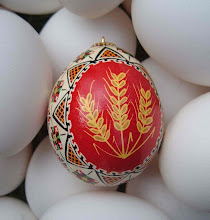Being able to count on some seeds germinating for 3 years means that I can buy in larger quantities. In 2006, I bought a one ounce package of Mammoth basil from Johnny's for not much more than a package with 100 seeds, and I've grown 50 feet of basil from those seeds for the last 4 years. They germinated so well I think I'm going to count on them again this year, but I've also bought a new package (Italian Large Leaf) to see if there's a difference. So not only did I pay a lot less than if I'd bought a new package every year, I had so many seeds I could grow a lot more than I would have from a package. 100 seeds for 2.95. 17,700 seeds for 4.00. Hmm, what to do. (My community gardeners should let me know if you want basil - I always have extra seedlings)
Germination is not the only game though. Sometimes seeds will germinate but not have the vigor a fresher seed would. I try to balance the cost of the seed with the time invested, the fertilizer, etc, and my experience
I started out thinking I'd replace all my 2007 seeds, but that was going to be too expensive, and I know that some can be relied on to grow, even though they're 4 years old. So I'll grow 2007 lettuce, maybe some beans and squash and beets - but those aren't the only seeds I'll be relying on. I'm confident that 2006 basil is going to do just fine, at 5 years old. Nothing ventured, nothing gained. If you don't mind the expense of replacing seeds every year, then of course that's fine.
Territorial considers parsley, spinach, onion and corn to be seeds that need to be replaced every year, but I find I can usually depend on 30 - 50% of them germinating in the second year. A lot is going to depend on how carefully they were stored. I grew year old corn last year and wasn't happy with the germination. Because you're counting on pollinating with the wind all your corn in a stand really needs to be about the same age, so you can't fill in. I won't do this again with corn.
Another advantage to keeping seeds for 2-3 years is being able to grow several varieties without having to buy that many packages every year. I usually grow about a dozen varieties of tomatoes, but buy only 3-4 packages of seed each year.
Usual seed life as listed in Territorial's catalog:
1 year - should be new seeds for 2010
corn
onions
parsley
spinach
2 years - can use 2009 seeds in 2010
beetseggplant
chard
2-3 can try using 2008 seeds in 2010
beanspeas
peppers
3 years - can use 2008 seeds in 2010
edamamebroccoli
carrots
cabbage
cauliflower
celery
cucumbers
kale
lettuce
melons
pumpkins
tomatoes
3-4 years - can try using 2007 seeds in 2010
brussels sproutssquash
4 years - can use 2007 seeds in 2010
radish



No comments:
Post a Comment